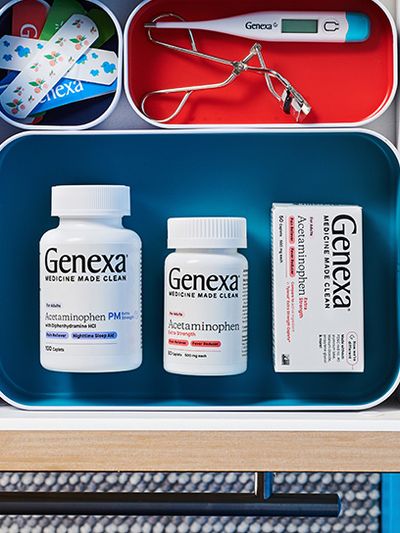How To Treat Gas And Indigestion In Yourself Or Your Child
Treatment Methods For Gas and Indigestion
Table of contents:
This article will provide you with useful information so that you can properly treat gas and indigestion in yourself or your child.
Overview
Your body must pass gas several times every day. However, gas bubbles sometimes get trapped and can cause a sharp, stabbing pain in your chest or your abdomen. Trapped gas can cause any range of pain from mild discomfort to pain so severe you feel the need to go to the emergency room. There is also a wide range of causes of trapped gas, several of which will be discussed in the section below.
Causes
Although there are several causes of trapped gas, a majority of them are due to problems with your digestive system.
General Digestion Problems
Sometimes, if your digestive system is generally not functioning well, it can affect your gas production. Four main factors influence the functioning of your digestive system. They are: what foods you eat, the speed at which you eat, how much air you swallow while eating, and the combination of foods you eat during a meal.
Generally speaking, your large intestine processes all of the foods that your small intestine cannot process such as carbohydrates like bran, broccoli, and cabbage. It turns these foods into hydrogen and carbon dioxide gasses. The offensive smell of gas is released as tiny amounts of proteins, fat, and carbohydrates get broken down by certain bacteria. This process can lead to an excess amount of gas in your system, causing your body to trap some of the excess. You or your child might also just be slower at processing food in your intestine due to a lack of enzymes which can also lead to trapped gas.
Inability to Digest Specific Foods
Another cause of trapped gas in you or your child may be due to your body’s inability to digest specific foods such as milk products or gluten. If you cannot process milk products, you are lacking the enzyme lactase and may be lactose intolerant. If you cannot digest gluten, the protein found in wheat, barley, and rye, then you may have a gluten intolerance.
To figure out if your or your child has a food intolerance, it can be helpful to keep a food diary. In the diary, track what foods you eat in a day and your response to them. If you notice, for example, that every time you have milk, ice cream, and cheese, you produce an excessive, painful amount of gas, then you may have lactose intolerance.
The most common sources of gas are:
- Fiber-rich foods such as whole grains and bran
- Sugars found in mushrooms, and some fruits and vegetables
- Lactose, in people with lactose intolerance
- Sweeteners like sorbitol, xylitol, and high fructose corn syrup used in food, candy and chewing gum
- Carbonated drinks like soda, which release a large amount of carbon dioxide gas
Gas-Creating Habits
There are also specific eating and lifestyle habits that cause your body to produce more gas than usual. As a general rule, the more you inhale while you eat, the more gas you produce.
Other specific habits that can lead to excessive gas include:
- Drinking from a straw
- Overeating
- Talking while eating or chewing
- Drinking from a water bottle or water fountain
- Smoking or using other tobacco products
- Chewing gum or eating hard candy
- Experiencing more than your usual amount of stress
Constipation
Constipation is the inability to make regular bowel movements, experiencing pain while having bowel movements, and producing hard, dry stool. Another uncomfortable symptom of constipation is the inability to pass gas. This inability can lead to trapped gas bubbles in the abdomen.
For several reasons including anxiety about using the bathroom and withholding, children are more likely to experience constipation. If your child is experiencing sharp stomach pain, it may be beneficial to check on the last time they had a bowel movement. If it seems that they have not had a bowel movement frequently, they may be constipated.
Health Conditions
Alongside various lifestyle habits and dietary choices, there are also a number of health conditions that can lead to trapped gas or excessive gas production.
These include:
- Irritable bowel syndrome (IBS)
- Ulcerative colitis
- Peptic ulcers
- Crohn's disease
- Gastroparesis
Symptoms
The primary symptom of trapped gas is a sharp, stabbing pain somewhere in your chest or abdomen. However, it can also cause a general feeling of discomfort and unease in your body. Alongside the pain, trapped gas can also cause bloating and stomach cramps.
If the gas collects on the left side of your colon, it can radiate up to your chest and create symptoms similar to those of a heart attack. If gas collects on the right side of your colon, it can create symptoms similar to those of appendicitis or gallstones. Thankfully, trapped gas is far less serious and easier to treat than all of these ailments.
Medications
There are several medications you can take to ease the pain and discomfort of trapped gas. In order to ensure that you are taking the proper medication, it is a good idea to consult your doctor to assess the cause of your stomach pain.
Enzymes for Digestion
If you believe the cause of your or your child’s trapped gas is lactose intolerance, there are medications such as Lactaid that you can take. Essentially, enzyme preparations are medications that you can take preemptively if you think you are going to eat something that will upset your stomach.
If you think your pain only occurs when you eat legumes, then you might have an intolerance to beans and other legumes. The enzyme alpha-galactosidase is a naturally occurring enzyme that counteracts the gas created by legumes.
Laxatives
If it seems as though you or your child is constipated, it can be beneficial to take a laxative. These medications can relieve occasional constipation by helping your body produce more regular bowel movements.
If your child is constipated, make sure to give them a laxative made specifically for kids.
Other Treatments
Alongside medication, there are other at-home remedies you can try to relieve the painful symptoms of trapped gas.
Dietary Changes
If you or your child is experiencing pain from gas, one of the first things you can try is making dietary changes.
Some foods that are known to cause gas include the following:
Beans
Fried and fatty food
Wheat and wheat products
Certain fruits such as apricots, peaches, prunes, and pears
Certain vegetables such as asparagus, cucumbers, green peppers, onions, and peas
Beans
If you want to continue serving beans but know that they cause you or your child to produce gas or bloat, you can try soaking dry beans in water overnight. Once you are ready to cook them, you can strain out the water and prepare them in new water.
It can also be beneficial to increase your water intake and avoid carbonated beverages if you regularly experience trapped gas. In addition to the carbonation, avoiding soda is also a good idea to reduce gas production because it often contains artificial sweeteners which can negatively impact digestion. Room-temperature liquids, as opposed to very cold or very hot beverages, are also less likely to cause excessive gas.
Changes to Eating Habits
Given that swallowing air is a common cause of trapped gas in children, you can try encouraging your child to not swallow air while eating. You can do this by making sure they do not drink through a straw or gulp their food while eating.
Both of these will allow them time to eat slowly and give their body enough time to properly process food. You can also limit the amount of gum they chew and hard candy they eat.
Exercise
If you have gas trapped in your system, one of the best ways to get it out is by doing gentle exercises such as walking or lying on your back and pedaling your legs. This will lead to flatulence in the moment but may prevent some of the uncomfortable pain associated with trapped gas.
When should I call the doctor?
Although it is possible to treat trapped gas at home, there are certain situations in which you should call your doctor. If you feel that you or your child experiences trapped gas frequently or the gas stays trapped for a long time, then it may be a good idea to call your doctor because more serious action needs to be taken.
You should also call your doctor if the trapped gas is accompanied by any of the following symptoms:
- Weight loss
- Blood in your stool
- Heartburn
- Loss of appetite
- Changes in bowel movement habits
- Nausea or vomiting
Conclusion
Trapped gas is an uncomfortable sensation that can lead to sharp, stabbing pains in your abdomen or chest. This pain can range from mild discomfort to severe pain. Although there is not one specific cause of trapped gas, it is usually caused by some kind of digestion problem.
There are several medications and remedies you can try at home, but if your symptoms are severe or long-lasting, it is a good idea to call your doctor.







